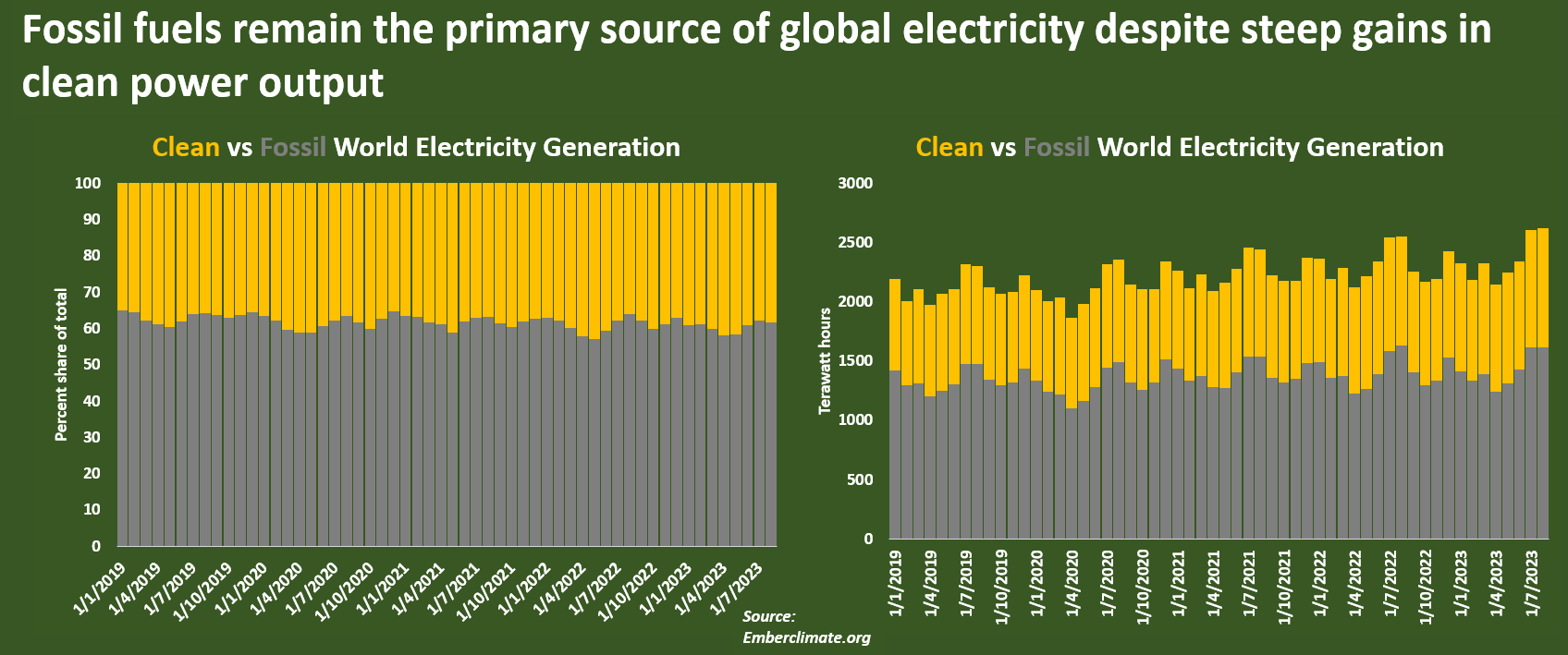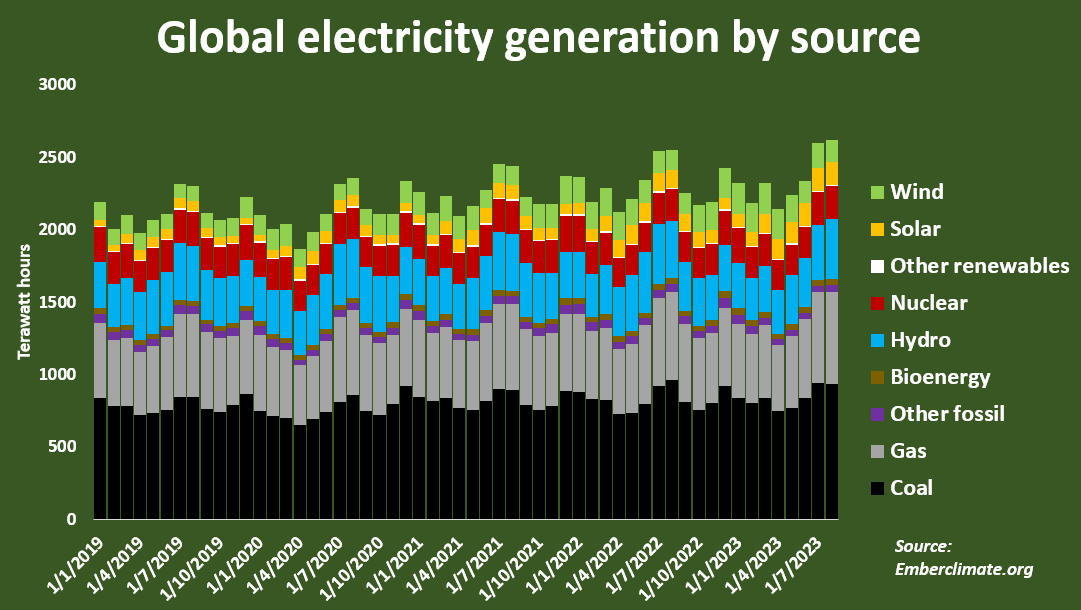LITTLETON, Colorado, Nov 30 (Reuters) – Over 60% of global electricity generated so far in 2023 was produced by fossil fuels, despite the ongoing aggressive roll-out of renewable energy sources in every major economy.
Several key countries have sourced well over half of their electricity from fossil fuels this year, including the United States (59%), China (65%), India (75%), Japan (63%), Poland (73%) and Turkey (57%), according to data from think tank Ember.
Such a wide span of key global manufacturing and exporting economies underscores the challenges facing delegates as they convene this week for the COP28 climate conference in Dubai.
Many attendees at the annual United Nations summit will be pressing for urgent and widespread cuts to fossil fuel use to avert further increases in average world temperatures which are on track to smash records again in 2023.

But with the energy systems of so many influential countries still so dependent on fossil fuels, there is little chance that COP28 meetings will yield the kind of bold power sector overhauls that ardent climate activists may hope for.
OLD KING COAL
On a global basis, coal generated more electricity than any other power source over the opening eight months of the year, Ember data shows.
Roughly 36% of global electricity came from coal-fired power stations through August, which as a share of total generation is very slightly less than during the same period in 2022.
In terms of actual generation, coal-fired electricity output hit a new high of 837.7 terawatt hours (TWh) through August, up 0.6% from the same period in 2022 and roughly 7% above the generation total for January through August in 2019.

Coal’s staying power as the main pillar of the global electricity generation system is at odds with widely held assumptions that coal is being phased out of power systems due to plant closures seen in Western economies in recent years.
However, while coal’s share of the total electricity generation mix has declined from roughly 16% in Europe and 21% in North America respectively in 2019 to around 14% in both Europe and North America this year, coal’s share in Asia has held largely flat at around 56%.
What’s more, average monthly coal output in Asia has increased from around 590 TWh in 2019 to 686 TWh so far this year, due to strong growth in China, India and elsewhere.
China has managed to lower coal’s share of the electricity mix in recent years from over 65% in 2019 to just under 59% in October of this year, but India’s coal share remains stubbornly strong at well over 70%.
Indonesia, the Philippines and Poland all also source well over half of their electricity from coal, ensuring total coal consumption will remain well supported over the coming years despite localized efforts to curb coal use elsewhere.
GAS ON THE UP
Natural gas has the second largest share of electricity generation globally, accounting for around 22.6% of total generation so far this year.
Total world electricity generation from natural gas hit a new high of 630 TWh in August of 2023, due mainly to a strong upturn in gas-fired generation in the United States during the northern hemisphere summer when air conditioning demand peaks.
Gas generation also hit a new high in China this year, where it has displaced dirtier-burning coal in some regions, but has stayed below previous peaks in other key gas-fed markets including Germany, Japan and South Korea.
Gas consumption across Europe has been hobbled by an ongoing downturn in industrial activity following the surge in regional power prices in 2022.
Any sustained recovery in factory and heavy industry output heading into 2024 will boost gas use across the region, even as power producers also increase the supply of renewable energy from wind and solar sites.
RENEWABLE REPLACEMENTS
Worldwide, electricity generation from renewable sources has grown at nearly triple the pace of fossil fuels since 2019, providing a boost to supporters of the energy transition away from fossil fuels.
Yet clean electricity’s share of total electricity generation has yet to pass the 40% threshold during the January to August period, Ember data shows, indicating that fossil fuels remain the primary source of electricity for the world.
Attendees of the upcoming COP28 meetings will hope to help clean electricity sources eventually surpass fossil fuels in terms of total generation, but will likely need to wait until later COP meetings to celebrate that milestone.
<The opinions expressed here are those of the author, a columnist for Reuters.>
Reporting by Gavin Maguire; Editing by Christopher Cushing
Share This:



.jpg)
